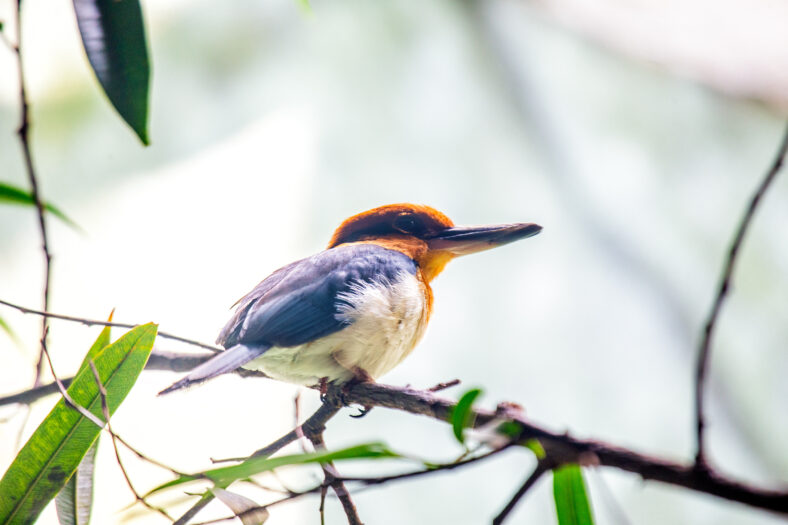For The First Time In 40 Years, This Previously Extinct Bird Has Laid Eggs In The Wild

A brightly colored bird that has been extinct in the wild for almost 40 years has been introduced on a new island in the Pacific Ocean. The population has even started laying eggs, much to the delight of biologists.
The Guam kingfisher (Todiramphus cinnamominus) has settled on Palmyra Atoll, a remote circular chain of 26 islets located halfway between Hawaii and American Samoa. On March 31, biologists discovered a nest containing eggs about 12 feet off the ground.
To the Indigenous Chamoru people, the Guam kingfisher is known as the “sihek.” It is a colorful, medium-sized bird with a long, thick beak. Males are mostly cinnamon-colored with teal wings and tails, while females have pale white feathers on their front.
Sihek are skilled hunters. They sit and wait patiently on branches until one of their favorite prey animals crosses their path.
They enjoy feasting on spiders, beetles, geckos, skinks, and land crabs. They will swoop down and use their bills to capture the critters.
The birds are very territorial and get aggressive when defending their homes. Sihek used to be abundant in Guam, but the introduction of the invasive brown tree snake led to their decline. In 1988, the birds were declared extinct in the wild.
Luckily, conservationists managed to capture 28 sihek before they were gone for good. They established a captive breeding population to keep the species alive.
Last September, nine captive-bred Guam kingfishers were released on Palmyra Atoll. There were five males and four females.
Palmyra Atoll is approximately 3,600 miles east of Guam. It’s not exactly near the bird’s natural habitat, but the location was chosen because it is a protected site.

Sign up for Chip Chick’s newsletter and get stories like this delivered to your inbox.
It is within the boundaries of the U.S. Fish and Wildlife Service’s Palmyra Atoll National Wildlife Refuge and the Pacific Remote Islands Marine National Monument. Palmyra Atoll has also been cleared of invasive species like rats.
The nine kingfishers hatched in zoos and facilities across the U.S. Then, they were transported to the Sedgwick County Zoo in Wichita, Kansas, to be raised by keepers.
When they were old enough, they made the 4,500-mile journey to a research station on Palmyra Atoll. They spent about a month getting used to the area before they were fitted with radio trackers and set free.
“These birds were raised in captivity until last year,” said Martin Kastner, a biologist working with the Nature Conservancy and the Zoological Society of London on the reintroduction project. “Now, they’re foraging, nesting, and even laying eggs on their own. It’s an incredible step forward.”
When the biologists went to check on some known Guam kingfisher nests around the atoll, they came across one nest created by a pair named Fuetsa and Sindålu. However, it was empty. Then, they reached another nest inhabited by Tutuhan and Hinanao and found an egg.
It was the species’ first wild egg in nearly 40 years. Five days later, they saw a second egg. Since then, they have found eggs in two other nests.
More About:Animals